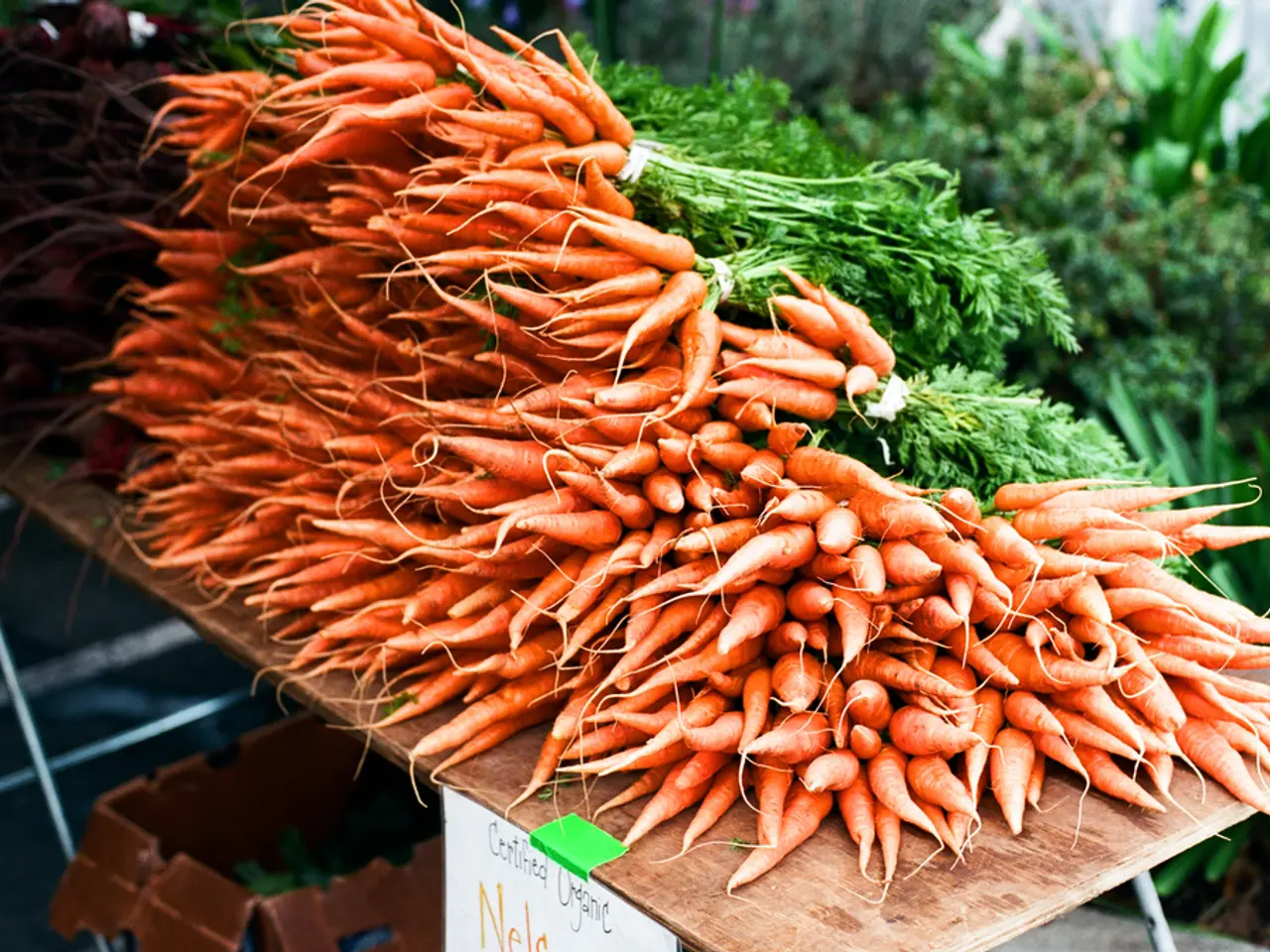Method for Cultivating Carrots: Garden Carrot Farming
Veggie Gardening 101: How to Grow Carrots
Ready to add a juicy, nutritious vegetable to your garden? Look no further! Carrots, known for their eye health benefits and versatility in cooking, are a tasty addition to any garden. This guide will walk you through everything you need to know about growing carrots, from soil preparation to common varieties. So let's dive in, dirty fingers and all!
The Root of the Matter
Carrots were first cultivated in Afghanistan around 900 AD, and over the centuries, we've come to love this crunchy, orange root vegetable. But don't be fooled—carrots come in a rainbow of colors! With the right care and attention, you can grow and enjoy these root veggies in your very own garden.
The Big Dig
When it comes to growing carrots, choosing the right soil is key. Carrots thrive in loose, slightly sandy soil with good drainage. To achieve this, lightly till or break up the soil until it has a crumbly texture. Be sure to remove stones, pebbles, and debris that might impede the roots' growth.
Carrots prefer a slightly acidic to neutral soil pH of 6.0 to 7.0, as this maximizes nutrient availability. If your soil leans more toward acidic, liming or using raised beds with prepared soil can help create a more neutral environment.
Light ‘em Up
Carrots are sun lovers—give them a spot in your garden that gets full sun for 6 to 10 hours each day. They won't produce robust roots in less sun, which is, after all, what we're after!
Puttin' Down Roots
Carrot seeds are tiny—use a manual seed dispenser to make sure you're only dispersing one seed at a time. Sow your seeds about 1/4 inch deep, water well, and keep the soil moist but not waterlogged. Carrots grow slowly at first but will be ready to harvest in 70 to 80 days.
Keep 'em Healthy
To ensure your carrots reach their full potential, keep weeds at bay, water consistently, and protect your plants from pests like carrot flies and leafhoppers. Harvest your carrots early to prevent damage, and clean up your garden at the end of the season to prevent overwintering pests.
Bounty of Options
When it's time to choose your carrot variety, consider the Nantes, Danvers, or Chantenay options. Each offers its own unique advantages, such as sweet flavor, medium size, thickness, or short length.
Carrot-tastic Container Growing
Don't have room for a garden bed? No problem! With a deep container (at least 12 to 18 inches deep for most varieties) and the right soil mix, you can grow carrots in containers, too. Just remember not to transplant seedlings since they don't handle transplanting well.
Helpful Resources
- Gardening tips, videos, info and more delivered right to your inbox! Sign up for our platform's newsletter and receive a free e-book, "How to Grow Delicious Tomatoes"!
- Want more information about growing carrots? Try the following resources:
- The University of Tennessee's guide to growing carrots
- The National Gardening Association's carrot growing tutorial
- The Old Farmer's Almanac's advice on growing carrots in containers
Happy gardening! 🥕💕
- Carrots, with their vibrant hues, can add a splash of color to your home-and-garden lifestyle.
- By growing carrots and other veggies in your garden, you're not only improving your lifestyle but also enhancing the home-and-garden atmosphere.







